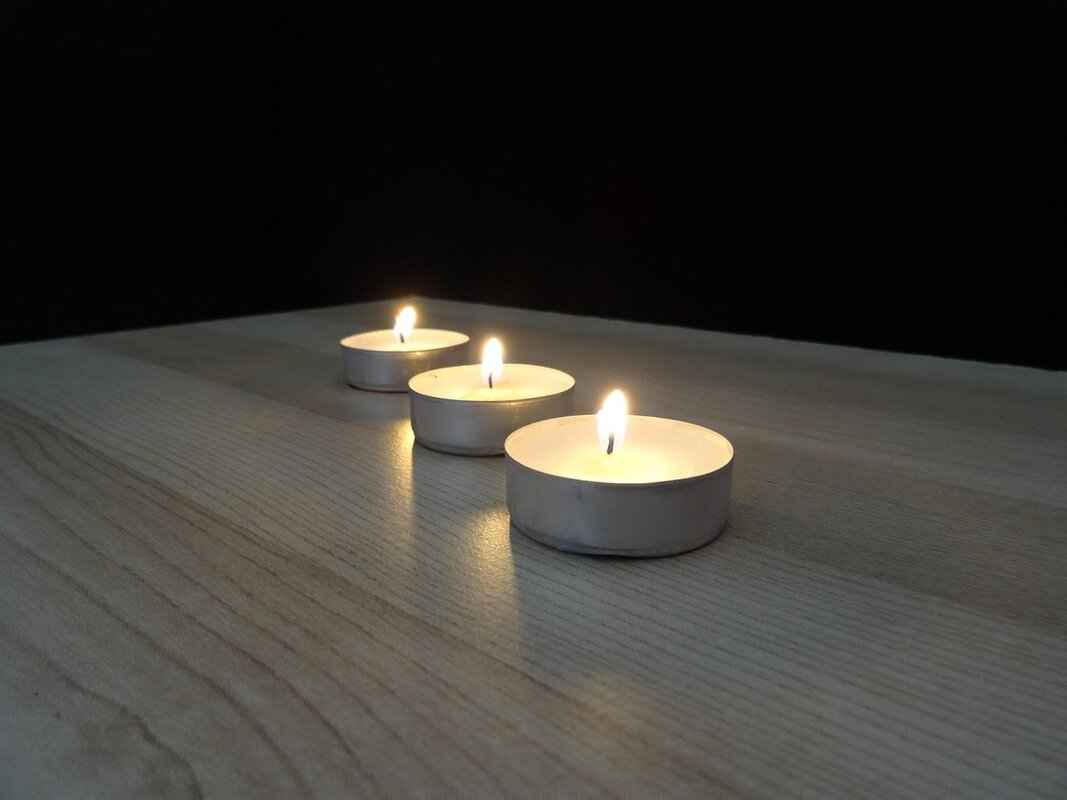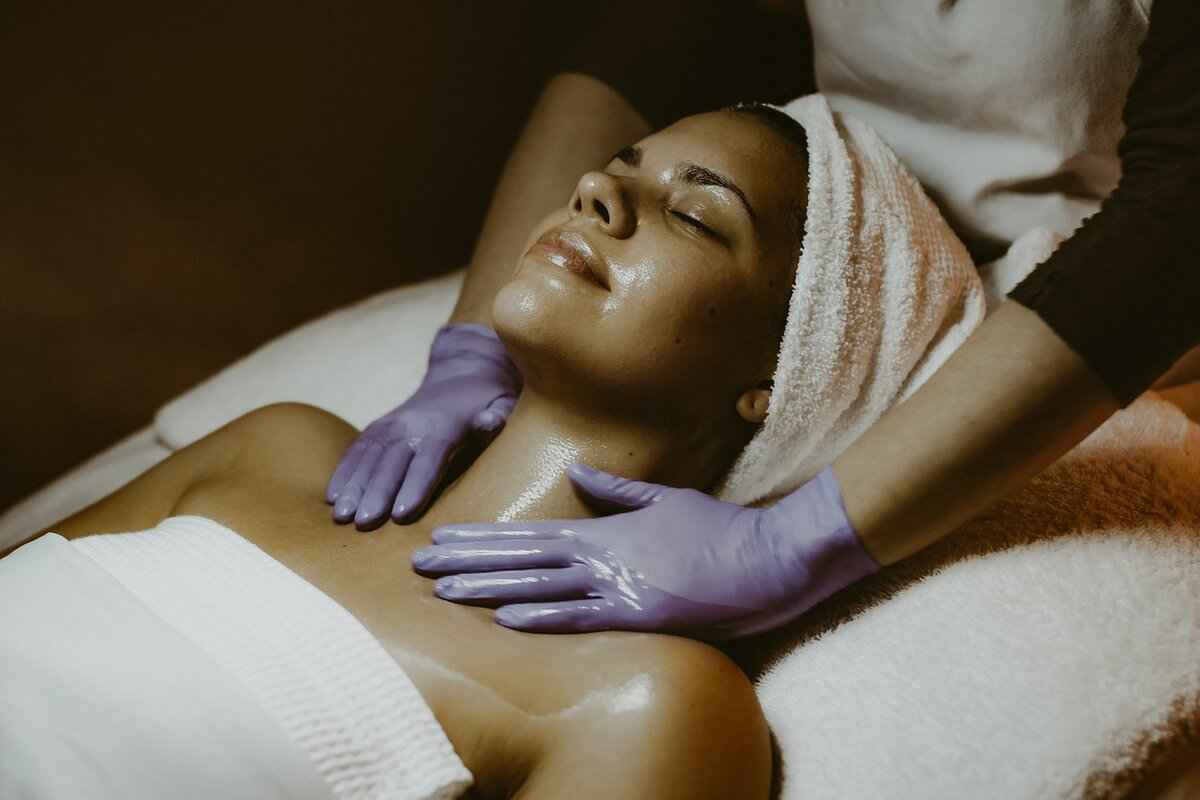This article delves into the authentic experiences offered by Asian massage parlors, exploring their techniques, cultural significance, and what clients can expect during a visit.
Understanding Asian Massage Techniques
Asian massage encompasses a variety of techniques, each designed to promote relaxation and healing. Notable styles include:
- Spa Treatments: These often include gentle strokes and aromatic oils to enhance relaxation.
- Shiatsu: Originating from Japan, Shiatsu employs finger pressure on specific points to balance energy.
- Thai Massage: This technique combines acupressure and yoga-like stretching to improve flexibility and alleviate tension.
- Tui Na: A Chinese practice that uses rhythmic compression along energy channels to promote health.
The Cultural Significance of Massage in Asia
Massage is deeply embedded in Asian cultures, often viewed as a vital component of traditional medicine. Its historical roots can be traced back thousands of years, where it was utilized not only for relaxation but also for healing purposes. Today, it remains a popular practice, reflecting a blend of ancient wisdom and modern wellness trends.
The Role of Traditional Medicine
In traditional Asian medicine, massage is considered essential for maintaining health. It integrates seamlessly with practices like acupuncture and herbal medicine, offering a holistic approach to well-being. This synergy enhances the overall effectiveness of treatments, promoting both physical and mental health.
Modern Adaptations of Traditional Techniques
As the wellness industry evolves, many Asian massage practitioners adapt traditional techniques to meet contemporary needs. This includes integrating modern therapies and technology, catering to a diverse clientele seeking relaxation and therapeutic relief.
What to Expect During a Visit
For first-time visitors, understanding the massage process can ease apprehensions. Typically, a visit begins with an initial consultation, where therapists assess individual needs and preferences, ensuring a personalized experience.
Choosing the Right Massage Parlor
Finding an authentic massage parlor can significantly enhance your experience. Look for establishments with:
- Qualified Practitioners: Check credentials and training backgrounds.
- Positive Reviews: Read online testimonials to gauge customer satisfaction.
- Welcoming Atmosphere: A relaxing environment can greatly influence your experience.
Benefits of Regular Massage Therapy
Engaging in regular massage therapy provides a myriad of benefits, including:
- Physical Health: Alleviates muscle tension, enhances circulation, and aids recovery from injuries.
- Mental Wellness: Reduces stress, anxiety, and promotes overall emotional balance.

Understanding Asian Massage Techniques
Asian massage is a rich tapestry of techniques that have evolved over centuries, each offering its own unique set of benefits. These techniques are not just about relaxation; they are deeply rooted in the cultures from which they originate, providing various therapeutic effects that cater to the physical and mental well-being of individuals. This section delves into three popular styles of Asian massage: Shiatsu, Thai, and Tui Na, exploring their origins and the specific health benefits they provide.
- Shiatsu: Originating from Japan, Shiatsu translates to “finger pressure.” This technique utilizes the practitioner’s fingers, palms, and thumbs to apply pressure on specific points of the body, known as tsubo. Shiatsu aims to balance the body’s energy, or ki, promoting relaxation and alleviating pain. Regular sessions can lead to improved circulation, reduced stress levels, and enhanced overall vitality.
- Thai Massage: Known for its dynamic and invigorating approach, Thai massage combines acupressure, assisted yoga postures, and stretching techniques. This ancient practice, which dates back over 2,500 years, encourages flexibility and energy flow throughout the body. Clients can expect to experience increased mobility, relief from muscle tension, and a profound sense of relaxation. The incorporation of rhythmic movements and gentle pressure stimulates the body’s natural healing processes.
- Tui Na: A significant component of traditional Chinese medicine, Tui Na focuses on the flow of qi (energy) within the body. This technique employs a variety of hand techniques, including kneading, rolling, and pressing, to treat various ailments. Tui Na is particularly effective for musculoskeletal issues, stress relief, and enhancing the immune system. By addressing the root causes of discomfort, this massage style promotes holistic healing and well-being.
Exploring these diverse techniques reveals not only their unique benefits but also the cultural significance and historical context that shape each practice. Understanding these elements can enhance your experience and appreciation of Asian massage, making it a valuable addition to your wellness routine.

The Cultural Significance of Massage in Asia
Massage has been an integral part of Asian cultures for centuries, deeply intertwined with traditional medicine and holistic healing practices. Its significance extends beyond mere relaxation; it embodies a philosophy that emphasizes the balance of body, mind, and spirit. This article delves into the rich historical context of massage in Asia and its evolving role in contemporary society.
The origins of massage in Asia can be traced back to ancient civilizations, where it was used as a therapeutic tool to promote health and well-being. In countries like China, India, and Japan, massage techniques were developed alongside traditional medical practices. For instance, Tui Na in Chinese medicine focuses on the flow of Qi (energy) through the body, while Ayurvedic massage in India utilizes specific oils and techniques to restore balance and harmony.
In modern society, the role of massage has expanded significantly. It is no longer confined to traditional settings but has found a place in contemporary wellness practices. Many individuals seek massage therapy not only for relaxation but also for its therapeutic benefits. Research indicates that regular massage can alleviate stress, reduce muscle tension, and improve circulation, making it a popular choice among those looking to enhance their overall health.
- Integration with Modern Medicine: Many healthcare providers now recognize the benefits of massage therapy and incorporate it into treatment plans.
- Accessibility: The proliferation of massage parlors and wellness centers has made these services more accessible to the general public.
- Cultural Exchange: As Asian massage techniques gain popularity worldwide, they also promote cultural exchange, allowing people to experience diverse healing practices.
As we continue to embrace the holistic approach to health, the cultural significance of massage in Asia serves as a reminder of the interconnectedness of body and mind. Whether through traditional methods or modern adaptations, the essence of massage remains a vital component of wellness journeys across the globe.
The Role of Traditional Medicine
Traditional Asian medicine is a holistic approach that encompasses various practices aimed at achieving balance and wellness. Among these practices, massage therapy holds a significant place, often viewed as a crucial component of healing. This section delves into how massage integrates with traditional medicine and its perceived benefits.
Asian massage techniques are not merely physical manipulations; they are deeply rooted in the philosophies of energy flow and body balance. For instance, in Chinese medicine, massage techniques like Tui Na are used to stimulate the body’s meridians, promoting the flow of Qi (energy) and enhancing overall health. This practice is often integrated with acupuncture and herbal medicine, creating a comprehensive treatment plan that addresses both physical and emotional ailments.
Similarly, in Ayurvedic medicine, massage is used to balance the body’s doshas (energies). Techniques such as Abhyanga involve the use of warm oils tailored to individual needs, promoting detoxification and relaxation. These massages not only relieve muscle tension but also support the body’s natural healing processes.
Furthermore, the benefits of incorporating massage into traditional medicine extend beyond relaxation. Regular sessions are believed to improve circulation, enhance flexibility, and alleviate chronic pain. Many practitioners observe that clients often experience reduced anxiety levels and improved emotional well-being following treatment.
In summary, the integration of massage within traditional Asian medicine exemplifies a holistic approach to health. By addressing both the physical and energetic aspects of well-being, these practices offer a comprehensive pathway to health and vitality.
Ayurvedic Practices
Ayurvedic practices are deeply rooted in the ancient Indian system of medicine, which emphasizes the importance of achieving balance and wellness in both body and mind. One of the essential components of Ayurveda is the use of massage, which is believed to promote healing and rejuvenation. In this section, we will explore specific techniques and oils used in Ayurvedic massages, shedding light on their significance and benefits.
Ayurvedic massage, known as Abhyanga, involves the application of warm herbal oils to the body. This technique is designed to enhance circulation, relieve muscle tension, and detoxify the body. The choice of oil is crucial, as different oils are selected based on an individual’s dosha or body constitution. For instance:
- Vata Dosha: Sesame oil is often used for its warming properties.
- Pitta Dosha: Coconut oil is preferred for its cooling effects.
- Kapha Dosha: Mustard oil may be utilized for its stimulating qualities.
In addition to the choice of oil, the techniques employed during Ayurvedic massage are also tailored to the individual’s needs. Some of the common techniques include:
- Long, flowing strokes: These movements help to calm the nervous system and promote relaxation.
- Kneading and circular motions: These techniques are effective for relieving muscle tension and enhancing circulation.
- Gentle tapping: This method invigorates the body and stimulates energy flow.
Moreover, Ayurvedic massage is not merely a physical treatment; it is also a holistic approach that addresses emotional and spiritual well-being. Practitioners often incorporate elements of aromatherapy, using essential oils to enhance the therapeutic experience. The combination of massage, oil, and aromatherapy supports a comprehensive healing process.
In summary, Ayurvedic practices emphasize the significance of massage in achieving balance and wellness. By utilizing specific techniques and oils tailored to individual needs, Ayurvedic massage offers a unique and effective approach to holistic health.
Chinese Medicine and Tui Na
Tui Na massage is a fundamental aspect of Chinese medicine, renowned for its holistic approach to healing and wellness. This ancient practice, which translates to “push and grasp,” employs a variety of techniques that manipulate the body’s energy, or Qi, to restore balance and promote health.
The techniques of Tui Na are diverse, encompassing methods such as kneading, rolling, and pressing specific acupoints. These techniques not only help in alleviating muscle tension but also enhance the flow of energy throughout the body. Unlike typical Western massages that primarily focus on relaxation, Tui Na aims to address underlying health issues by stimulating the body’s natural healing processes.
One of the remarkable aspects of Tui Na is its ability to complement other traditional Chinese therapies, such as acupuncture and herbal medicine. For instance, while acupuncture focuses on inserting needles into specific points to balance energy, Tui Na provides a hands-on approach to achieve similar results through physical manipulation. This synergy enhances the overall effectiveness of treatment, allowing practitioners to tailor therapies to individual needs.
Furthermore, Tui Na is often utilized in conjunction with herbal treatments. Practitioners may recommend specific herbal remedies that align with the energy patterns identified during a Tui Na session. This integrative approach ensures a comprehensive treatment plan that addresses both symptoms and root causes of health concerns.
In summary, Tui Na is not merely a massage technique; it is a vital component of Chinese medicine that embodies a deeper understanding of the body’s energy systems. By combining Tui Na with acupuncture and herbal therapies, individuals can experience a holistic healing journey that nurtures both body and mind.
Modern Adaptations of Traditional Techniques
As the world of wellness continues to evolve, Asian massage has adapted to meet the diverse needs of contemporary society. This adaptation is not merely a blend of old and new; it represents a thoughtful integration of traditional practices with modern wellness trends.
Practitioners are increasingly recognizing the importance of personalization in massage therapy. By incorporating elements such as aromatherapy and sound therapy, they create a more holistic experience that resonates with today’s wellness seekers. For instance, Shiatsu techniques, originally rooted in Japanese tradition, are now often combined with modern relaxation methods to enhance the overall effectiveness of the treatment.
Moreover, the rise of mindfulness and stress management has influenced how massages are approached. Many therapists now emphasize the importance of mental well-being alongside physical relief. Techniques such as Thai massage are being adapted to include breathwork and meditation, allowing clients to leave not only physically rejuvenated but also mentally refreshed.
In urban settings, where the pace of life can be overwhelming, massage parlors are crafting environments that cater to a busy clientele. Many establishments have adopted spa-like atmospheres, offering calming music and soothing scents to enhance relaxation. This shift recognizes that the ambiance plays a crucial role in the overall effectiveness of the treatment.
Furthermore, with the advent of technology, some practitioners are integrating digital tools into their services. Online booking systems, virtual consultations, and even guided meditation apps are becoming commonplace, making it easier for clients to access the benefits of traditional massage techniques in a way that fits their modern lifestyles.
Ultimately, these modern adaptations of traditional techniques not only honor the rich heritage of Asian massage but also ensure its relevance in today’s fast-paced world. By blending time-honored practices with contemporary wellness trends, practitioners are redefining the massage experience for a new generation.

What to Expect During a Visit
When visiting an Asian massage parlor for the first time, it’s completely normal to feel a bit anxious. Understanding the typical process can greatly alleviate these nerves and help you prepare for an enjoyable experience. This section provides a detailed overview of what you can expect from the moment you arrive until the treatment concludes.
Upon arrival, you will likely be greeted by a friendly staff member who will guide you through the initial steps. This warm welcome sets the tone for your visit. Check-in procedures usually involve filling out a brief form that includes your personal details and any specific areas of concern you may have. This is an essential part of the process as it helps the therapist tailor the session to your individual needs.
After check-in, you may be escorted to a private room or a designated area where the massage will take place. Here, you will have the opportunity to discuss your preferences with the therapist. This initial consultation is crucial for ensuring that the treatment aligns with your expectations, whether you prefer a gentle touch or a more intense pressure.
Once you are comfortable and ready, the therapist will leave the room to allow you to undress to your comfort level. It’s important to note that you will be draped with a clean sheet throughout the session, ensuring your privacy and comfort. The massage itself typically begins with the therapist assessing your body’s tension and areas that require more focus.
During the treatment, various techniques may be employed, depending on the style of massage you have chosen. Whether it’s the gentle stretching of Thai massage or the deep pressure of Shiatsu, each method aims to promote relaxation and relieve tension. The session usually lasts between 60 to 90 minutes, providing ample time for a thorough experience.
Finally, at the end of the session, the therapist will typically allow you a few moments to relax before getting up. Afterward, you can discuss any feedback or questions you may have, ensuring that your experience is as beneficial as possible. Understanding these steps can transform your first visit into a rewarding journey of relaxation and rejuvenation.
The Initial Consultation
When visiting an Asian massage parlor, one of the most crucial aspects of the experience is the initial consultation. This process serves as a foundation for the entire massage session, allowing practitioners to understand the unique needs and preferences of each client. During this consultation, the therapist will typically ask a series of questions regarding your health history, any specific areas of tension or discomfort, and your overall wellness goals.
The importance of this consultation cannot be overstated. It not only helps in customizing the massage techniques to suit individual requirements but also ensures the safety and comfort of the client. For instance, if a client has a prior injury or a medical condition, the therapist can avoid certain techniques that might exacerbate the issue. This personalized approach enhances the effectiveness of the treatment, making it more beneficial for the client.
Moreover, the initial consultation is an opportunity for clients to express any particular preferences they might have regarding pressure levels or specific areas of focus. Some may prefer a gentle touch, while others may seek a more vigorous approach. By openly communicating these preferences, clients can significantly enhance their massage experience.
In addition to addressing physical needs, this consultation also allows clients to discuss their emotional and mental state. Many people seek massage therapy not just for physical relief but also for stress reduction and relaxation. By understanding these aspects, the practitioner can tailor the session to promote both physical and mental well-being.
Overall, the initial consultation is a vital step in the massage process, ensuring that each session is tailored to the client’s specific needs. This personalized approach not only maximizes the benefits of the massage but also fosters a trusting relationship between the client and the therapist, enhancing the overall experience.
Common Massage Settings
When it comes to massage experiences, the setting plays a crucial role in shaping the overall atmosphere and effectiveness of the treatment. Massage parlors come in various forms, each offering a unique ambiance and range of services. Understanding these differences can significantly enhance your experience.
- Luxurious Spas: These establishments often provide a serene and upscale environment. Clients can expect high-end amenities such as relaxation lounges, soothing music, and aromatherapy. Treatments may include a variety of specialized massages, facials, and body treatments, all designed to promote relaxation and rejuvenation.
- Neighborhood Parlors: Typically more affordable, neighborhood massage parlors cater to a wide range of clients. They often focus on traditional techniques, providing authentic experiences without the frills of luxury spas. The atmosphere is usually casual and welcoming, making it a great option for regular visits.
- Holistic Wellness Centers: These centers often combine massage therapy with other wellness practices such as yoga and acupuncture. The focus is on treating the whole person, integrating physical, mental, and emotional health. Clients can expect a more personalized approach, often with practitioners who have extensive training in multiple disciplines.
- Mobile Massage Services: For those who prefer the comfort of their own home, mobile massage services bring the spa experience directly to you. This option is particularly convenient for busy individuals or those with mobility issues. The quality of the service can vary, so it’s essential to choose reputable providers.
- Resort and Hotel Spas: These venues typically offer a luxurious escape, combining stunning views with top-notch service. Guests can enjoy a range of treatments tailored to enhance their stay, often accompanied by wellness programs and fitness classes.
The type of massage parlor you choose can significantly influence your experience. From the ambiance to the services offered, understanding these settings allows you to select the perfect environment for your needs, ensuring a fulfilling massage experience.

Choosing the Right Massage Parlor
Choosing the right massage parlor is essential for ensuring a positive and rejuvenating experience. The quality of service, ambiance, and professionalism can significantly influence your overall satisfaction. Here are some important factors to consider when selecting an authentic massage parlor:
- Check Credentials: It’s vital to verify the qualifications of the massage therapists. Look for establishments that employ licensed professionals who have undergone proper training in various massage techniques. Credentials can often be found displayed prominently in the parlor or on their website.
- Read Reviews: Online reviews can provide insight into the experiences of previous clients. Websites like Yelp and Google Reviews offer a platform for customers to share their feedback. Pay attention to comments regarding the professionalism of the staff, cleanliness of the facility, and the effectiveness of the treatments.
- Assess the Atmosphere: The ambiance of a massage parlor plays a crucial role in your relaxation. When visiting, notice the cleanliness, decor, and overall vibe. A tranquil environment with soothing music and pleasant aromas can enhance your experience.
- Inquire About Services: Different parlors offer varying types of massages, from deep tissue to aromatherapy. Make sure the parlor provides the specific type of massage you are seeking. Additionally, ask about any special packages or promotions that may be available.
- Understand Pricing: Pricing structures can vary widely among massage parlors. Look for transparency in pricing and be cautious of deals that seem too good to be true. A reputable parlor will provide clear information about their rates and any additional fees.
By considering these factors, you can enhance your chances of finding a massage parlor that meets your needs and provides a satisfying experience. Remember, the right choice can lead to not just relaxation but also significant health benefits.
Reading Reviews and Recommendations
When it comes to selecting a massage parlor, online reviews serve as a vital resource for potential clients. These reviews provide insights not only into the quality of services offered but also into the overall atmosphere and professionalism of the establishment. Understanding how to interpret these reviews effectively can help you find a reputable massage parlor that meets your needs.
Evaluating the Source of Reviews
Before diving into the content of reviews, it’s essential to consider where they are coming from. Look for reviews on reputable platforms such as Google, Yelp, or specialized wellness websites. Reviews from these sources are often more reliable, as they tend to have a larger pool of feedback and are less likely to be manipulated.
Identifying Key Themes
As you read through reviews, pay attention to recurring themes. Are multiple reviewers praising the same therapist? Is there consistent feedback about the cleanliness of the facility? Identifying these patterns can help you gauge the strengths and weaknesses of a massage parlor.
Considering the Balance of Reviews
While it’s natural to focus on the negative reviews, it’s crucial to consider the overall balance. A few negative comments amidst a sea of positive feedback might indicate isolated incidents rather than systemic issues. Conversely, a high number of negative reviews should raise red flags.
Looking for Detailed Experiences
Reviews that provide detailed accounts of personal experiences are often more valuable than generic comments. Look for reviews that discuss specific techniques, the professionalism of the staff, and the ambiance of the parlor. This level of detail can give you a clearer picture of what to expect during your visit.
Trusting Your Instincts
Finally, trust your instincts. If a massage parlor has numerous glowing reviews but something feels off, it’s okay to continue your search. Your comfort and safety should always be your top priority.
In summary, online reviews are a powerful tool in selecting a massage parlor. By carefully evaluating the source, identifying key themes, balancing feedback, seeking detailed experiences, and trusting your instincts, you can make an informed decision that enhances your overall experience.
Understanding Pricing Structures
When exploring the world of massage parlors, understanding pricing structures is essential for making informed decisions. Prices can differ significantly based on various factors, including location, type of service, and the experience of the therapist. This section will break down common pricing models and the elements that influence costs, ensuring you get the best value for your investment.
| Type of Service | Average Price Range | Factors Influencing Cost |
|---|---|---|
| Swedish Massage | $60 – $120 | Duration, therapist experience |
| Deep Tissue Massage | $70 – $150 | Specialized training, location |
| Thai Massage | $70 – $130 | Technique complexity, studio ambiance |
| Hot Stone Massage | $80 – $160 | Materials used, therapist skill level |
In addition to the type of massage, location plays a crucial role in determining prices. Urban areas often see higher rates due to increased demand and overhead costs. Conversely, rural settings might offer more affordable options. Moreover, the ambiance of the parlor can also affect pricing; luxurious spas typically charge more than neighborhood establishments.
- Promotions and Packages: Many parlors offer discounts for first-time clients or package deals, allowing you to save money while enjoying multiple sessions.
- Membership Programs: Some establishments provide membership options that offer reduced rates for regular clients, making it more economical for frequent visitors.
- Special Events: Look out for seasonal promotions or special event pricing, which can provide opportunities for discounted services.
Ultimately, understanding these factors will empower you to make an informed choice, ensuring that you receive quality service without overspending. By comparing different parlors and their offerings, you can find the perfect balance between cost and quality, resulting in a satisfying massage experience.

Benefits of Regular Massage Therapy
Regular massage therapy is not just a luxury; it is a vital component of a healthy lifestyle. The advantages of incorporating massage into your routine extend far beyond mere relaxation. This section will explore the myriad benefits, focusing on three key areas: stress relief, pain management, and improved circulation.
In today’s fast-paced world, stress has become a common issue for many individuals. Massage therapy offers a powerful antidote to stress by promoting relaxation and reducing tension in the body. The soothing touch of a skilled therapist can trigger the release of endorphins, the body’s natural painkillers and mood elevators. Regular sessions can lead to a significant decrease in anxiety levels, allowing individuals to approach daily challenges with a clearer mind and enhanced emotional resilience.
Individuals suffering from chronic pain conditions, such as arthritis or fibromyalgia, often find relief through massage therapy. Techniques such as deep tissue massage or trigger point therapy can target specific areas of discomfort, alleviating pain and promoting healing. Furthermore, massage can improve flexibility and range of motion, which is crucial for those recovering from injuries or surgeries. By addressing both the physical and emotional aspects of pain, massage therapy can enhance overall quality of life.
Another significant benefit of regular massage is the enhancement of blood circulation. The manipulation of soft tissues helps to stimulate blood flow, delivering essential nutrients and oxygen to muscles and organs. This improved circulation can aid in the recovery process after physical exertion and reduce the risk of injury. Moreover, enhanced circulation can contribute to better skin health, as it promotes a radiant and youthful appearance.
In summary, the benefits of regular massage therapy are extensive, impacting both physical and mental well-being. By incorporating massage into your routine, you can experience profound improvements in your overall health and quality of life.
Physical Health Benefits
Massage therapy is not just a luxury; it is a powerful tool for enhancing physical health and well-being. By applying various techniques, massage therapy can significantly aid in the recovery from injuries and promote overall wellness. This section delves into the multifaceted benefits of massage therapy, emphasizing its role in physical health.
One of the primary advantages of massage therapy is its ability to alleviate pain. Whether it’s chronic pain conditions or acute injuries, targeted massage techniques can help reduce inflammation and promote healing. For instance, sports massage is particularly effective for athletes recovering from injuries, as it focuses on specific muscle groups and enhances blood circulation, facilitating faster recovery.
Furthermore, massage therapy can enhance flexibility and mobility. Regular sessions help to loosen tight muscles and improve range of motion, which is especially beneficial for individuals with sedentary lifestyles or those recovering from surgery. Techniques such as Thai massage involve stretching and acupressure, which can significantly improve flexibility and prevent future injuries.
Another notable benefit is the improvement of circulation. Massage stimulates blood flow, which not only helps in delivering oxygen and nutrients to muscles but also aids in the removal of toxins. Improved circulation can lead to enhanced energy levels and overall vitality.
Additionally, massage therapy is known for its role in stress reduction and relaxation. While the focus here is on physical benefits, it’s important to note that reduced stress levels can also contribute to better physical health. Lower stress can lead to decreased muscle tension and fewer stress-related ailments, creating a holistic approach to wellness.
In summary, the physical health benefits of massage therapy are extensive. From pain relief and improved flexibility to enhanced circulation and stress reduction, massage serves as a comprehensive approach to physical well-being. By incorporating regular massage sessions into one’s routine, individuals can experience a profound impact on their overall health.
Mental and Emotional Well-being
Massage therapy extends its benefits beyond the physical realm, playing a crucial role in enhancing mental health and emotional well-being. In today’s fast-paced world, many individuals experience heightened levels of stress and anxiety, making it essential to explore effective methods for relaxation and mental clarity.
One of the primary ways massage therapy aids mental health is through the reduction of anxiety. Various studies have demonstrated that regular massage sessions can lead to significant decreases in anxiety levels. This is largely attributed to the release of endorphins and other neurotransmitters during massage, which promote feelings of happiness and relaxation. By actively engaging in this form of therapy, individuals can cultivate a sense of calm and tranquility.
Additionally, massage therapy promotes relaxation by lowering cortisol levels, the hormone associated with stress. As cortisol levels decrease, the body enters a state of relaxation, allowing individuals to unwind both physically and mentally. This physiological response can enhance sleep quality, further contributing to improved emotional health.
Moreover, the tactile nature of massage provides a unique opportunity for individuals to connect with their bodies. This connection can foster greater self-awareness and mindfulness, enabling people to better understand their emotional states and triggers. Such awareness is vital for managing stress and anxiety effectively.
Incorporating massage therapy into one’s routine not only provides immediate relief but also encourages long-term mental health benefits. By prioritizing regular sessions, individuals can develop a proactive approach to managing their emotional well-being. Thus, massage therapy serves as a powerful tool for nurturing both the body and mind, offering a holistic approach to health.
- Benefits of Massage for Mental Health:
- Reduces anxiety and stress
- Promotes relaxation and calmness
- Enhances sleep quality
- Increases self-awareness and mindfulness
Frequently Asked Questions
- What types of massage techniques are commonly found in Asian massage parlors?
Asian massage parlors often feature a variety of techniques, including Spa, Shiatsu, Thai, and Tui Na. Each offers unique benefits, from relaxation to pain relief, and often draws on rich cultural traditions.
- How should I prepare for my first visit to a massage parlor?
Before your visit, it’s helpful to communicate your needs and preferences during the initial consultation. Arriving relaxed and with an open mind can enhance your experience significantly.
- What can I expect during a typical massage session?
During a session, you can expect an initial consultation where the therapist assesses your needs, followed by the massage itself in a calming environment. The experience is designed to be both therapeutic and relaxing.
- Are there any health benefits associated with regular massage therapy?
Absolutely! Regular massage therapy can lead to stress relief, improved circulation, and pain management. It’s not just about relaxation; it’s a holistic approach to enhancing your overall well-being.
- How do I choose the right massage parlor for my needs?
Look for places with positive reviews, qualified therapists, and a welcoming atmosphere. Don’t hesitate to ask questions about their techniques and specialties to find the best fit for you.














